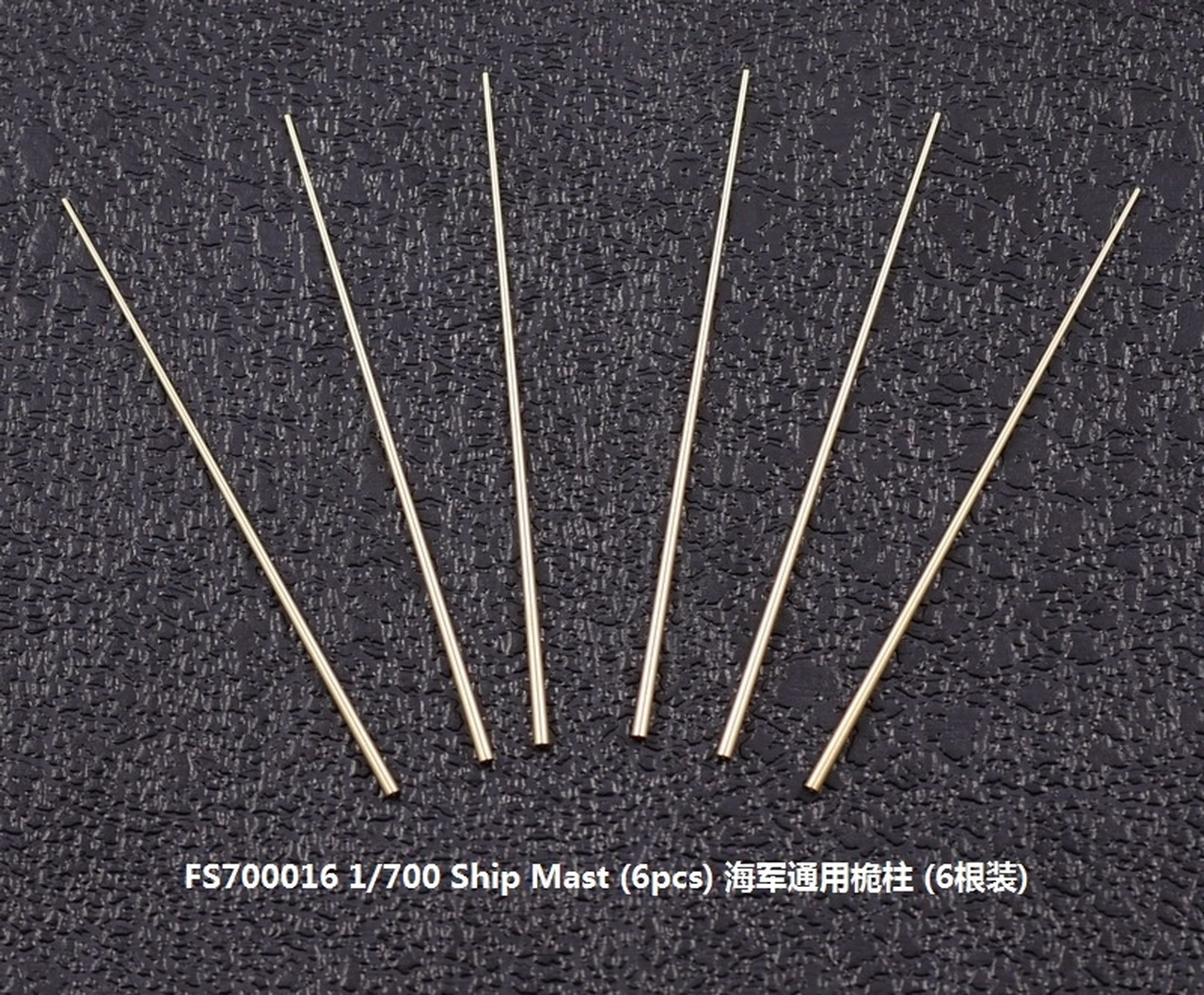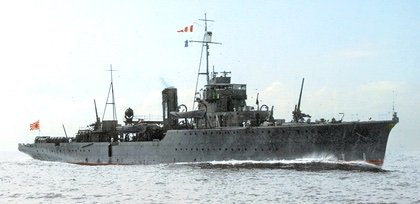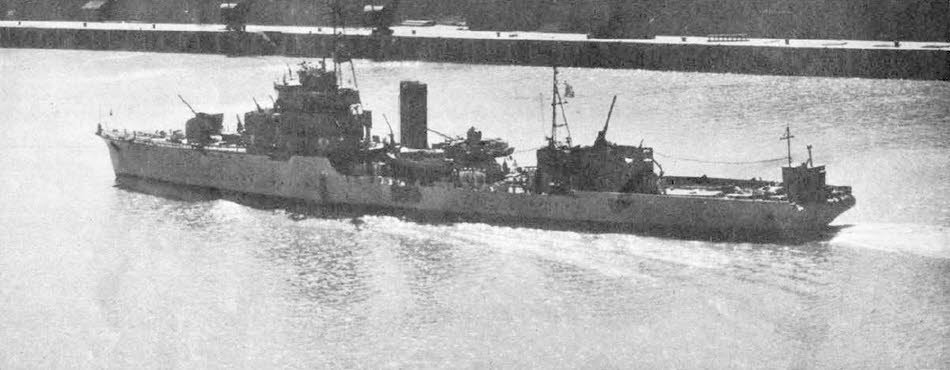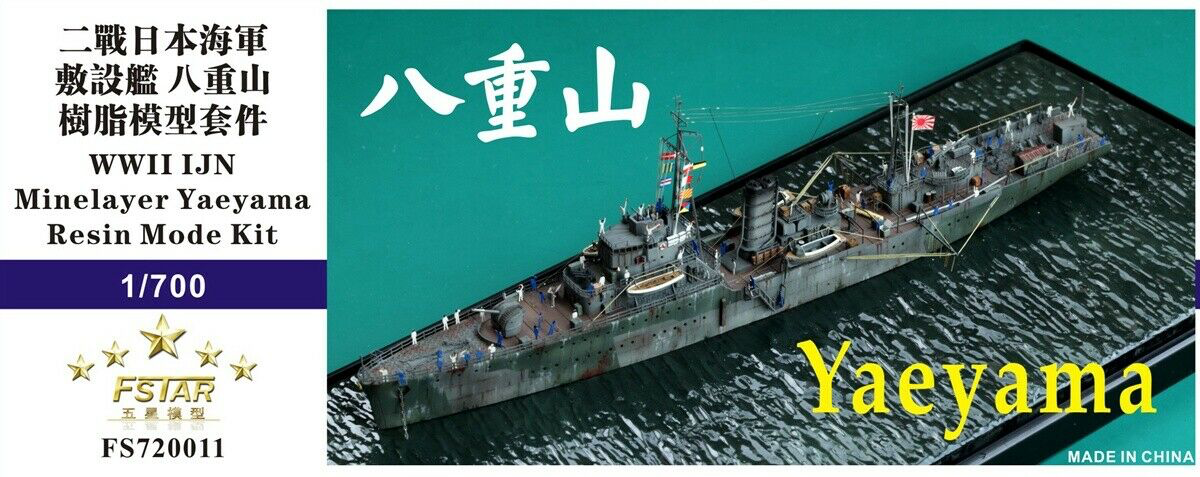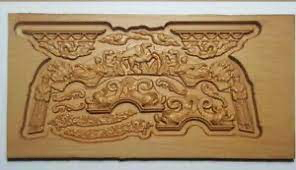-
Posts
4,532 -
Joined
-
Last visited
Content Type
Profiles
Forums
Gallery
Events
Everything posted by Landlubber Mike
-
While waiting on diorama bases on other projects to dry, I put in some more time on this one. First I built up the funnel. There are five PE rings that come with the kit, but the two steam pipes do not. Took some very thin brass rod (I think 0.4 or 0.5mm) and bent it to shape, and added the pipe tops to each which came from a Rainbow accessories set. Alongside the funnel is a rack which I think was used to carry wood, so I'll have to add some at the end of the build. Just behind the funnel was another structure which includes two vents, a rack on top, and then a circular platform where the searchlight goes. Next I built the stern structure. Not exactly sure what it is designed to do, as there is a rail on only one end and sort of a semi circular extrusion on the port side. The kit includes an opening for the door at the stern side, so I installed it with the door open. Here's a look at the full model - looking pretty good I think. Before I go too much further, I might add a red stripe at the waterline to avoid accidentally breaking any of the more sensitive things like the masts when trying to mask. Once the lower hull is painted, I can tape the lower hull and linoleum deck, and add the two masts and a few other details, and paint the hull. Despite the need to add necessary details not included in the kit (like the funnel pipes and the searchlight), I'm really enjoying the build. Five Star makes really nice PE parts which are a perfect fit. The subject also has plenty of open spaces so you can treat it as a blank canvas to add various details. Thanks for looking in!
-

RFM 1/35 Panzerkampfwagen IV Ausf.G-Finished
Landlubber Mike replied to Javlin's topic in Non-ship/categorised builds
Very nice job Kevin, looks fantastic! -

Making Brass Masts for 1/700 warships
Landlubber Mike replied to dcicero's topic in Metal Work, Soldering and Metal Fittings
Why not just get something like this from Five Star (this is available from Free Time Hobbies or on eBay): -
Glad you got that figured out Alan. I would have been tempted to throw it out the window Parts are looking fantastic! This gives me flashbacks to when @mtaylor had to show his Death Star who was boss...
- 460 replies
-
- Finished
- Flower-class
-
(and 1 more)
Tagged with:
-
On my current 1/350 build, I struggled with that question as well. Mostly because I hate taping, I tried to order assembly versus painting to avoid having to tape. For things like ammo lockers, I painted them separately then attached them. I was worried that I wouldn't be able to get the airbrush in tiny nooks, and would try too hard and get globs of paint. For things like the bridge and other structures, I find it easier to assemble off model and then attach. The problem is sometimes the attaching part can give you difficulties like gaps, etc. I had some problems with my bridge and had to take it off and re-glue it, and knocked off some of the PE details that I had to re-attach. Sometimes it's best to just go with your gut and figure it out as you go along. Can only plan so much!
-
Nice job OC! Alan, I completely agree. There has to be a lot of planning, I think particularly when working in this scale. I haven't built a Flyhawk 1/700 kit before, but the multiple sets of instructions (one for base kit, one for PE and other details) doesn't have me exactly excited.
-
Thanks guys! Lou, I find with my big sausage fingers and other clumsiness that I need to do the more physical work early on or off model, otherwise I end up breaking things faster than I can build 😕. The skeg was quite thick, ended up using a scriber to cut through both sides and then cleaned up with a hobby knife.
-

Magnifiers and glasses
Landlubber Mike replied to Dave_E's topic in Modeling tools and Workshop Equipment
I use the Optivisor with LED light frame as well and love it. I thought my eyes had gotten much worse the past month, but turned out the lights weren't as strong. I replaced the batteries and voila! Could see tiny PE again. -
Last night I worked on the funnel to add the five rings, as well as PE components at the top. Sorry for the bad picture, hard to get a good picture at high magnification on my phone. Funny thing is to the naked eye the rings, etc. look perfect, but on high magnification it looks a bit rough! I also added the vents/windlass on the bow deck - these are super tiny turned brass components from Five Star and Rainbow. You could just use a cut off piece of plastic rod, but you get crisper definition with the brass, and not to mention, it's not very easy to cut tiny pieces of plastic rod. I also added the rangefinder to the bridge. The kit includes a single PE piece that you fold in half. Instead I used an upgrade kit from Five Star which allows you to make it in a more three-dimensional fashion from five pieces - one you fold for the main box on top, a rod for the handle, a turned rod for the pedestal, and then two PE pieces to make the base. Really put the Optivisor to the test on that one! While I think it's a nice improvement over the kit rangefinder, I have to say that given how small it is, I'm not sure that most people would notice or appreciate the extra 30 minutes it took me to put this together over the simple fold and glue for the kit part.
-
Laid down in 1930 and completed in 1932, one of its claims to fame is that the Yaeyama was the first Japanese warship to feature an all-welded hull. Here's a colorized picture of the Yaeyama during its 1932 trials, alone with a black and white picture from the other side. You can see that huge Type 99 10th year AA gun in the back. The Yaeyama saw service in the second Sino-Japanese War, and later mined the Suritago Strait in the Philippines after Pearl Harbor. In December 1943, its minelaying rails were removed and replaced with depth charges as part of a refit to an anti-submarine convoy escort ship. While in February 1942 it had survived an encounter with the US PT-32 motor torpedo boat, it wasn't so lucky in September 1944 when it was hit by at least 10 bombs off the Philippines.
-
While waiting for paints, etc. to dry on my 1/350 Shimakaze build, I pulled another 1/700 kit out of the stash. It's the 1/700 IJN Yaeyama by Five Star: I was interested in this kit as it's an all-in-one resin kit with PE upgrade built in the kit box. Five Star makes a lot of PE upgrade sets for other kit manufacturers, but this is one of their newer line of in-house kits with upgrades. I loved the completed model diorama pictures on the box cover, so added it to the stash. I'm planning to push myself to try to model it in a similar diorama setting as the box cover, but include add a small boat or two in the water for added interest. In the box you have the resin hull along with a few resin components for the bridge, funnel, and other structural items. Also comes with four PE sheets: a medium sized fret for detailing the structures and the deck items, two smaller frets for adding railing and small boat details, and another fret to make the Type 99 10th year AA gun. The hull is really nice, just need to separate it off the plug: The resin parts and PE frets are very nice. The one disappointing thing with this kit is that it doesn't come with everything shown on the box cover, importantly, it doesn't include the searchlight as well as the vent and windlass on the deck at the bow. It also doesn't include the pipe or whatever that vertical structure is on the hull sides even with the bridge. Five Star and others (Rainbow Models, Veteran, etc.) make various add-ons which I had picked up to detail my upcoming builds, so it wasn't too big of a deal for me in the end. Still disappointing though. As a reference guide, I'm using Maru 42, an issue that was dedicated to IJN minelayers (happened to come across it on eBay a few weeks ago for a good price). It's actually got about 10 pages with lots of pictures on the Yaeyama, along with line plans for it. The pictures are mostly the usual grainy black and white, but you can make out some nice details in it. The publication is in Japanese, and it's been a long time since I studied the language back in college, plus, I was never very good with the Chinese characters (you needed to know 2000 "kanji" to be literate enough to read a newspaper!). But Google has a translation app that you can download that enables you to point the camera on your phone at text and the translation shows up on your screen. Cool tech!
-
Standards? I have no standards. I just fumble along with the PE like everyone else. Your stairs came out really nice. Do you have a hold and fold? On my first build I tried doing stairs using tweezers and never could get them looking right. With my 1/350 current build, I used the hold and fold and the stairs came out much much better. For what it's worth, I use the "Bug" from Small Shop: https://thesmallshop.com/products/sms002-the-bug-hold-fold
-
When I went to purchase it a few months ago, I didn't get that warning. This time around I did. If I recall correctly I did the transaction through PayPal which adds a layer of security, but if I got that warning message a few months ago I certainly would not have placed the order. Guess I was lucky with the timing. Your Tiger is fantastic by the way! Love the sea!!
- 542 replies
-
- Sphinx
- Vanguard Models
-
(and 3 more)
Tagged with:
-
Great start OC! I recently picked up a few Flyhawk kits. Can't tell if I like the instructions or hate them. What's complicated is when you buy the "Deluxe" or similar upgraded sets, you get a set of instructions for the base kit and a separate set for the upgrades. Would be nice if they were all in one. I wonder if the Pontos sets are all in one? I have their Soya, but haven't opened it.
-
Your Swan came out great! Love the effect! Did you paint the frieze? I'm thinking of free-hand painting the freeze as opposed to using the PE. Not sure if you are aware, but a Russian model outfit (www.v-hobby.com) put together a carved wood set for the decorative Pegasus elements. I ordered it mostly for the quarter galleries, and it is fantastic. I'll probably use more from it.
- 542 replies
-
- Sphinx
- Vanguard Models
-
(and 3 more)
Tagged with:
-
Looking great Ron! i haven’t tried Vallejo’s Liquid Gold line, but I’ve used some of their other Metal Colours and really like them. Another thing to consider is using gilding wax. It’s a paste like wax that people use to give an antique metal look to furniture, etc. I used it when I turned some wooden magic wands for my kids and i really liked the effect. I was thinking of using it on my Renommee build. I also like your approach on using gesso to build up the multi-layer PE. One reason I was looking into scratch building the ornamentation on my Pegasus was I wasn’t exactly thrilled with the look of layered PE. Using gesso to build it up is a great idea. Happy Thanksgiving!
- 542 replies
-
- Sphinx
- Vanguard Models
-
(and 3 more)
Tagged with:
About us
Modelshipworld - Advancing Ship Modeling through Research
SSL Secured
Your security is important for us so this Website is SSL-Secured
NRG Mailing Address
Nautical Research Guild
237 South Lincoln Street
Westmont IL, 60559-1917
Model Ship World ® and the MSW logo are Registered Trademarks, and belong to the Nautical Research Guild (United States Patent and Trademark Office: No. 6,929,264 & No. 6,929,274, registered Dec. 20, 2022)
Helpful Links
About the NRG
If you enjoy building ship models that are historically accurate as well as beautiful, then The Nautical Research Guild (NRG) is just right for you.
The Guild is a non-profit educational organization whose mission is to “Advance Ship Modeling Through Research”. We provide support to our members in their efforts to raise the quality of their model ships.
The Nautical Research Guild has published our world-renowned quarterly magazine, The Nautical Research Journal, since 1955. The pages of the Journal are full of articles by accomplished ship modelers who show you how they create those exquisite details on their models, and by maritime historians who show you the correct details to build. The Journal is available in both print and digital editions. Go to the NRG web site (www.thenrg.org) to download a complimentary digital copy of the Journal. The NRG also publishes plan sets, books and compilations of back issues of the Journal and the former Ships in Scale and Model Ship Builder magazines.




